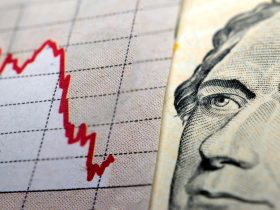For some time now, tech stocks have led the market. Among their distinguishing characteristics: high valuations, often with price/earnings ratios well north of 20, and high betas, which measure volatility—anything above 1.0 is a high beta stock. For instance, the most highly valued stock in existence, Apple
AAPL
The trouble with high-growth, high-volatility stocks is that they sometimes have scary flameouts. And when they drop, as they did spectacularly in 2022, they really drop. The S&P 500 dipped 19.5% last year, but Apple was off 26% and Nvidia plummeted 50%.
This year, volatility has been low, with the CBOE Volatility Index at around 15. It briefly popped up to 26 in March amid the demise of Silicon Valley Bank and two other smaller regional lenders. Then it settled back down.
Given all that, it pays to diversify your portfolio and not focus on what is hot at the moment. It’s worthwhile to include some low volatility stocks in your portfolio. As a Nasdaq report notes, “It can seem counterintuitive to many investors, but stocks that are less volatile than their counterparts have historically produced comparable or better returns. This means that on a risk-adjusted basis, low volatility stocks have been superior investments.”
Taking an even deeper dive into low volatility equities, two portfolio managers at MFS, James Fallon and Christopher Zani, produced research that these stocks do best in down markets.
In their paper, they show that during the Great Financial Crisis (from November 2007 to March 2009), the least volatile quintile of the MSCI All Country World Index exceeded the most volatile quintile by around 15%. In the 2022 downturn (from January to September), the least volatile segment outpaced the most volatile by about 8%.
The story is reversed for up markets. After the pandemic’s onset, the market surged. From April 2020 to December 2021, the low volatility quintile lagged by 30%. Similar to the Nasdaq study, the Fallon-Zani paper concludes that over the long run, however, returns for low volatility shares do as well or better than the rapid-fire group.
To show how this would work in the real world, they constructed two portfolios with the standard 60% stocks-40% bonds (namely the 10-year Treasury) breakdown. For the equity portion, one used the S&P 500, the other the least volatile U.S. stocks.
Over more than a half-century, from January 1971 to November 2022, the low volatility offering returned around 11% annually and the S&P 500 alternative just under 10%. What’s more, the low volatility portfolio had a far superior Sharpe Ratio, which gauges risk-adjusted returns, than the S&P 500 one: 0.40 versus 0.26, respectively.
Consider a fund that Fallon and Zani’s employer sponsors: The MFS Low Volatility Equity I gained an annual 9.6% over the past five years, just a little behind the S&P 500, at 10.7%. And this year, in an up market (aside from the downdraft in August), the fund lags a bit more, up 6.5% compared with the index’s 16.6% rise. But in the 2022 down year, the S&P 500 lost 19.5% while the MFS fund slid only 10.6%.
Some of the top low volatility names, by Nasdaq’s reckoning, are in consumer goods and utilities: Procter & Gamble
PG
Read the full article here









Leave a Reply